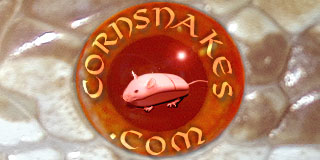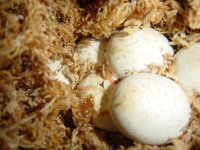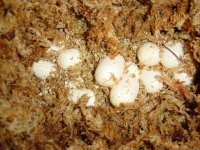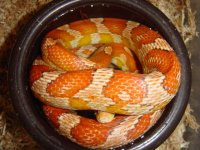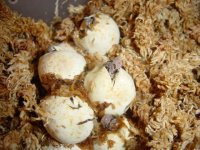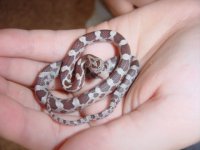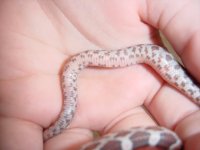-
Hello!
Either you have not registered on this site yet, or you are registered but have not logged in. In either case, you will not be able to use the full functionality of this site until you have registered, and then logged in after your registration has been approved.
Registration is FREE, so please register so you can participate instead of remaining a lurker....
Please be certain that the location field is correctly filled out when you register. All registrations that appear to be bogus will be rejected. Which means that if your location field does NOT match the actual location of your registration IP address, then your registration will be rejected.
Sorry about the strictness of this requirement, but it is necessary to block spammers and scammers at the door as much as possible.
You are using an out of date browser. It may not display this or other websites correctly.
You should upgrade or use an alternative browser.
You should upgrade or use an alternative browser.
53 Days
- Thread starter Alicia
- Start date
PSYCOSNAKEMOM
~~~~~~~:~ Newbies Rule?
did she eat?
How long after she was born before you fed her? She is way too cute! Sam ~~~~~~~~:~
How long after she was born before you fed her? She is way too cute! Sam ~~~~~~~~:~
That's a pic of the mama. The babies havn't come out yet, last time I checked anyway. I offer the mama a small meal right after they lay. She had laid her second clutch for the season today. I just thought it was interesting that her first clutch started hatching the same day she laid her second clutch But she is too big for that little water dish. It always amazes me how they can cram themselves into such small places.
But she is too big for that little water dish. It always amazes me how they can cram themselves into such small places.
I hope all goes well with your babies
I hope all goes well with your babies
Re: Nice!
Thank you for the compliment. Sometimes an egg might not look so good but healthy babies still make it out
I'm only expecting Normals, but I hope they are pretty.
This is one of the babies that is out so far. I really like this one, a keeper
Isak said:Your eggs are wery healthy i can see. That makes me happy! I've seen many eggs that looks bad, your eggs are the first i thought was perfect looking!
Hope u got some nice colors there!
Thank you for the compliment. Sometimes an egg might not look so good but healthy babies still make it out
I'm only expecting Normals, but I hope they are pretty.
This is one of the babies that is out so far. I really like this one, a keeper
Attachments
PSYCOSNAKEMOM
~~~~~~~:~ Newbies Rule?
Oh Yes~~~~~~:~
That's a keeper all right. Doesn't look a thing like the babes here, which are normals too. Sam ~~~~~~~:~
That's a keeper all right. Doesn't look a thing like the babes here, which are normals too. Sam ~~~~~~~:~
Darin Chappell
Very Senior Hillbilly
Alicia,
Are those babies het for hypo and bloodred, by chance? The mama looks like a crimson, and the belly checkering pattern on that baby looks like an outcrossed bloodred. Am I anywhere close to being right???

Are those babies het for hypo and bloodred, by chance? The mama looks like a crimson, and the belly checkering pattern on that baby looks like an outcrossed bloodred. Am I anywhere close to being right???
Darin Chappell said:Alicia,
Are those babies het for hypo and bloodred, by chance? The mama looks like a crimson, and the belly checkering pattern on that baby looks like an outcrossed bloodred. Am I anywhere close to being right???

Yes, very right. But I was going to post this as seperate question, but since your here I'll ask you. The daddy is an outcrossed Bloodred. Do the babies usually have that look since the daddy is not a full bloodred? I'm confused, I thought when you bred the outcrossed Bloodred that those babies would be very normal looking. This Bloodred thing has me very confused.
What do I call them? Normals het for ??? LOL......This is terrible, I didn't want to put these two together for these very reasons
Darin Chappell
Very Senior Hillbilly
Alicia,
If you want to start another thread, go ahead, and we can take it up there. If not, I'll post here a little later. Whatever you want to do . . .
If you want to start another thread, go ahead, and we can take it up there. If not, I'll post here a little later. Whatever you want to do . . .
Darin Chappell
Very Senior Hillbilly
OK, it seems that the bloodred trait is a combination of two factors: pattern mutation and linebred coloration. The pattern mutation is simple recessive (or patially dominant, or co-dominant . . . however you want to look at it. No one is certain yet!) and an animal can be het for that trait. All outcrossed bloodreds are het for the bloodred pattern morph and can pass that on to their offspring in the same manner that any inheritable trait is passed on.
So, an outcrossed bloodred bred to a normal will give you a clutch of babies that are 50% normals and 50% outcrossed bloodreds. Clues as to which are which include the reduced coloration on the head pattern (the gray skull appearance) and the incomplete belly checks on the ventral sclaes (the "clear" stripe down the center). However, the only way to say that an animal is 100% het for the bloodred pattern is to have it be from an actual bloodred or to perform breeding trials.
As for the color side of the issue, it is no different than reverse okeetees, candycanes, or sunglows. It is merely an effect of line breeding for red coloration. That's why anery bloodreds, pewters, amel bloodreds, and bloodreds all have the same pattern, but show drastically differing shades within each category. The color will be a factor in some of the babies, and you may want to keep some of the high red ones to breed back in a project. However, the coloration and the pattern mutation are not necessarily linked to one another. It is very possible to get a high red normal and a rather drab baby het for bloodred.
Sooooo, If I had to bet on the question, I would say that the baby you showed in the picture above is probably het for bloodred, and so would all of the other babies be that show the same pattern clues. Since it is also defintely het for hypo, it would be a pretty valuable little snake, once it is proven to be het for both!
Congratulations!
So, an outcrossed bloodred bred to a normal will give you a clutch of babies that are 50% normals and 50% outcrossed bloodreds. Clues as to which are which include the reduced coloration on the head pattern (the gray skull appearance) and the incomplete belly checks on the ventral sclaes (the "clear" stripe down the center). However, the only way to say that an animal is 100% het for the bloodred pattern is to have it be from an actual bloodred or to perform breeding trials.
As for the color side of the issue, it is no different than reverse okeetees, candycanes, or sunglows. It is merely an effect of line breeding for red coloration. That's why anery bloodreds, pewters, amel bloodreds, and bloodreds all have the same pattern, but show drastically differing shades within each category. The color will be a factor in some of the babies, and you may want to keep some of the high red ones to breed back in a project. However, the coloration and the pattern mutation are not necessarily linked to one another. It is very possible to get a high red normal and a rather drab baby het for bloodred.
Sooooo, If I had to bet on the question, I would say that the baby you showed in the picture above is probably het for bloodred, and so would all of the other babies be that show the same pattern clues. Since it is also defintely het for hypo, it would be a pretty valuable little snake, once it is proven to be het for both!
Congratulations!
Thanks So Much!!
I thought that might be the case but I was not sure. I thought about it too much and started to doubt myself.....LOL
Your explanation made things clearer
I think I will keep back a trio for my self. I already have a pure Bloodred from Kathy Love and my outcrossed Bloodred, both males.
Now the hard part, picking which ones to keep. Almost all of them have that belly pattern and many of them have quite a bit of gray on their heads. Some have almost no color on the nose area!! Decisions Decisions
ps: I forgot to add that the mama is het for Amel (proven).
I thought that might be the case but I was not sure. I thought about it too much and started to doubt myself.....LOL
Your explanation made things clearer
I think I will keep back a trio for my self. I already have a pure Bloodred from Kathy Love and my outcrossed Bloodred, both males.
Now the hard part, picking which ones to keep. Almost all of them have that belly pattern and many of them have quite a bit of gray on their heads. Some have almost no color on the nose area!! Decisions Decisions
ps: I forgot to add that the mama is het for Amel (proven).
Darin Chappell
Very Senior Hillbilly
Were there any amels in this clutch, or was she proven het for amel in another breeding? I'd like to see some clutch pictures, when you get the chance!
My bloodred x amel motley breeding has turned out well. All of the babies are readily eating, but some of them require a little anole scenting. If I can produce some motley bloods and amel motley bloods in a couple years, it will be well worth the trouble!
I have a bloodred yearling I might be interested in selling to you, Alicia. She is really beautiful, and is 66% possibly het for hypo as well. Email me, if that interests you at all.

My bloodred x amel motley breeding has turned out well. All of the babies are readily eating, but some of them require a little anole scenting. If I can produce some motley bloods and amel motley bloods in a couple years, it will be well worth the trouble!
I have a bloodred yearling I might be interested in selling to you, Alicia. She is really beautiful, and is 66% possibly het for hypo as well. Email me, if that interests you at all.
Darin Chappell said:Were there any amels in this clutch, or was she proven het for amel in another breeding? I'd like to see some clutch pictures, when you get the chance!
My bloodred x amel motley breeding has turned out well. All of the babies are readily eating, but some of them require a little anole scenting. If I can produce some motley bloods and amel motley bloods in a couple years, it will be well worth the trouble!
I have a bloodred yearling I might be interested in selling to you, Alicia. She is really beautiful, and is 66% possibly het for hypo as well. Email me, if that interests you at all.

No Amels, she was proven in another breeding. She used to belong to Frank Pinello but originally came from SerpenCo. I will get some pics when they have all shed. Right now they are kind of lack luster. I think they look a little better after that first shed.
Motley Bloodreds and Amel Motley Bloodreds sounds good to me. I hope that project is a success
A female Bloodred yearling hmmm, yes I'm interested
